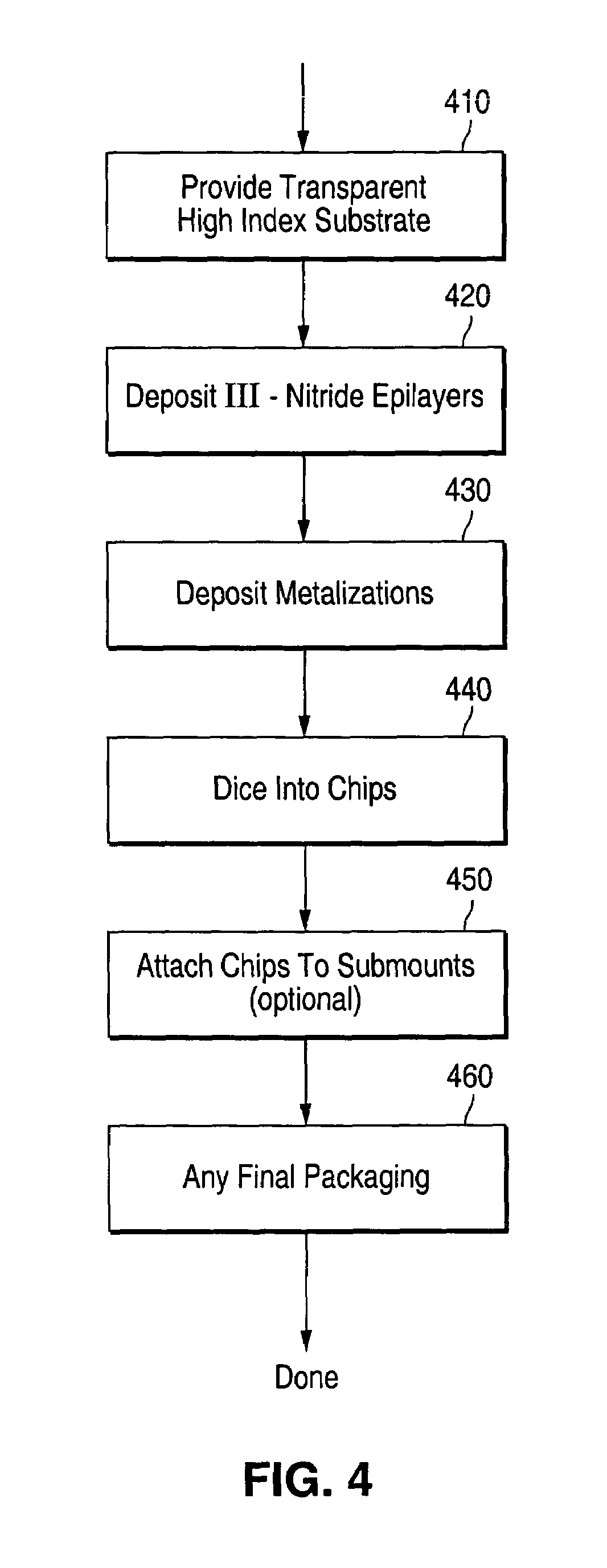Semiconductor light emitting device and method
a semiconductor and light-emitting technology, applied in the direction of semiconductor devices, basic electric elements, electrical appliances, etc., can solve the problems of absorbing a significant amount of light, reducing the fraction of light that exits the device, and wasting time and energy in prior art approaches to maximize light, etc., to achieve high light generating capability, low series resistance, and high reflective
- Summary
- Abstract
- Description
- Claims
- Application Information
AI Technical Summary
Benefits of technology
Problems solved by technology
Method used
Image
Examples
Embodiment Construction
[0024]FIG. 1 illustrates an example of a prior art type of III-nitride semiconductor device 110 in a so-called flip-chip or inverted or epitaxy-down configuration. In this example, the substrate 115, on which the device was originally formed, is sapphire, which has an index of refraction n˜1.8. [The substrate 115, after inversion, is sometimes referred to as a superstrate.] The epitaxy region 120 of III-nitride semiconductor layers includes n-type layer 122 and p-type layer 128, with an active region p-n junction between the n-type and p-type layers. Typically, an active region layer 125 of III-nitride semiconductor is disposed at the p-n junction. A conductive p-electrode 138 is deposited on the p-type layer 128 and a conductive n-electrode 132 is deposited on the n-type layer 122. In this prior art configuration, the electrodes are typically opaque and reflective, and the objective is to emit as much of the light as possible through the top and sides of the sapphire superstrate 11...
PUM
| Property | Measurement | Unit |
|---|---|---|
| thickness | aaaaa | aaaaa |
| thickness | aaaaa | aaaaa |
| area | aaaaa | aaaaa |
Abstract
Description
Claims
Application Information
 Login to View More
Login to View More - R&D
- Intellectual Property
- Life Sciences
- Materials
- Tech Scout
- Unparalleled Data Quality
- Higher Quality Content
- 60% Fewer Hallucinations
Browse by: Latest US Patents, China's latest patents, Technical Efficacy Thesaurus, Application Domain, Technology Topic, Popular Technical Reports.
© 2025 PatSnap. All rights reserved.Legal|Privacy policy|Modern Slavery Act Transparency Statement|Sitemap|About US| Contact US: help@patsnap.com



